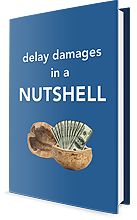The Pitfalls of a New Schedule Delay Analysis Standard, Getting Paid for Changes, and Publication of the Third Edition of Construction Delays
Usually, our Ideas & Insights provide information on a single topic that helps you avoid, evaluate, or deal with problems on your construction projects.
Instead of focusing on one particular topic, in this Idea & Insight posting we’ve provided three new resources that we hope you find helpful.
How ASCE’s New Schedule Delay Analysis Standard May Impact Owners
One trend in the construction industry is the attempt to define delay analysis guidelines by professional organizations. Engineering News Record recently published a viewpoint by Mark Nagata that looks at a major flaw in the American Society of Civil Engineer’s new Schedule Delay Analysis Standard. The article discusses why this standard is unfair to owners.
Click the following link to read the full viewpoint: https://www.enr.com/articles/43115-the-flaw-in-asces-new-project-delay-guidelines
How Subcontractors Can Get Paid for Changes and Claims
Subcontractors sometimes struggle with compiling the necessary documentation that they need to make their change orders and claims submissions complete and, most importantly, successful. Bill Haydt provided some subcontractor-specific advice on eSub’s blog.
Click the following link to read the entire article: https://esub.com/getting-paid-changes-claims-take/
Construction Delays, Third Edition, Recently Published
Ted Trauner wrote the first edition of Construction Delays in 1990. In the following decades, the analysis of delays on construction project has become a common and more sophisticated practice.
Mark Nagata, Bill Manginelli, Scott Lowe, and Ted Trauner spent over a year revising and adding new sections to this third edition of Construction Delays. The newly released third edition is not just an update of the prior two publications, it provides practitioners with everything they need to know to accurately identify, measure, and price delays.
Most notably, the book now includes an entire section on reviewing and approving construction schedules submitted by contractors during the project. The new edition also discusses how to evaluate a retrospective time-impact analysis, as well as how to evaluate the strength and weaknesses of the various schedule delay analysis methods.
Click the following link to read the full description of the new book: https://www.elsevier.com/books/construction-delays/nagata/978-0-12-811244-1

